Latest
Keep an Eye On With B.A. Johnson: Anthony Crawford
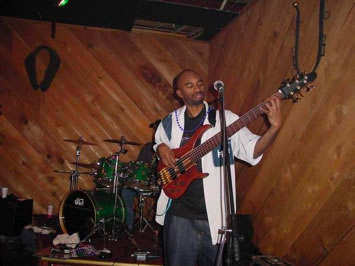
Chops and intelligence?! HMMM… It was bound to happen. I remember teaching a particularly competitive student as a teenage bass instructor in the early 1980’s. In a desperate attempt to get this person to understand that music is not a competition, I made the unknowingly prophetic remark, “man, there is a musician who’s yet still a baby who may grow up to be a remarkably innovative bassist!” Little did I know, then…
Anthony Crawford was born in 1981 to a very musical family that includes his father (drummer) Hubert “H-Bomb” Crawford and his gifted uncle (saxophonist) Hank Crawford! So, when we made friends on FaceBook I knew it was only a short matter of time before I would be allowed to introduce him to a wider audience! I love my job…
Anthony’s “Urban Jazz” features a wealth of deep grooves, 2-hand tapping, majestic soloing and melodic interplay. The compositions are (thankfully) beyond the scope of the typical “bass player makes a record no one digs”. I am convinced that much of what I am hearing from this adroit young bassist is the slightly unconventional influence of players such as Doug Wimbish, dUg Pinnick, and Mike Inez in his technical approach – instead of the typical list of players I find in a bassist’s bag. COOL! Again: thankfully. “AC” shows himself to be an instant classic, and he’s had an incredible journey since sitting-in with his dad with the Bette Midler band – at the age of 14! Here is Anthony Crawford!
BAJ: Hey man! Welcome to Bass Musician Magazine! Its good to hang for a few minutes and hear from you! Let’s start with the premise that produced “Urban Jazz”… what was the main theme you wanted to bring to your listening audience, and what was your primary goal for the disc’s release?
AC: Well the primary goal behind “Urban Jazz” is to approach a solo bass record with a pop-ish urban feel and, at the same time, bring fresh original music that everyone can enjoy. I’ve always thought that it would be cool to do a bass record but I wanted to have a different concept behind it. I hear a lot of bass records all the time… But I wanted to have a concept that would make me stand out from others bassists. Although I am a bass player, I am also a producer – as I have produced songs for rap and hip hop artists. I listen to a lot of urban stations and I always imagined what it would sound like if I could capture the urban feel of today’s music and turn that music it into a “bass album”. I also wanted to bring something unique to the listeners’ ears – while taking them on a (musical) journey. I wanted each song on my album to say something. Whether through the melody, or the way I played the solo, the vocals, and the groove… I hoped the listener would feel like I am taking them someplace they usually wouldn’t go themselves. Stanly Clarke told me to find what makes me unique, and write songs based upon that quality. So I took that idea and I came up with the “Urban Jazz” title – which is a “bass jazz album from an urban point of view”.
BAJ: Please describe your 2-hand ‘tapping’ technique and how you have developed it over the years?
AC: My 2-hand tapping technique… Hmmmm…. Well, there is a lot of Victor Wooten’s influence when it comes to my 2-hand tapping technique. I got his “A Show Of Hands” release when I was 16. When I got that album I said, “there is no way 1 person can be playing all of this!” (Laughter) So, I listened to that album and figured out what he was doing. I began applying what I thought he was doing to the bass. I sat with my CD player for 8-hours at a time figuring out how he was playing those songs the way he did. When I finally got the concept down, I took the same concept and played it my way. Then, I began learning other songs by learning the bass lines and melody at the same time.
As I started practicing that way I began to see a pattern. I realized that every time I tapped out songs… they felt like grooves! So, instead of thinking about a lot of notes, I looked at songs as 1 big groove! After that, a lot of songs started to come more easily, as far as 2-hand tapping technique is concerned.
Later on, as I got more comfortable with tapping, I started to approach tapping the way a piano player would. For example, if a pianist is soloing, they will play chords with their left hand and solo with their right hand. Sometimes they might also alter the chords with their left hand while playing the corresponding lines with their right hand to give an extra edge. I use that same concept.
BAJ: Unlike many young bassists, it seems you were listening to your dad’s music more than others bother to! Good! You site Geddy Lee and Eddie Van Halen as refreshingly unexpected influences! (Editor’s note: Geddy was my commencing influence – however I began playing in the late 1970’s!) What tunes really “hit you over the head” when you were younger?
AC: I have heavily influenced by rock musicians. Van Halen is one my favorite groups! The first album I got was “For Unlawful Carnel Knowledge”. The first song on that album, “Poundcake”, blew me away and I was hooked! Then I started to get their older recordings. Also, Geddy Lee always blows my mind when I heard him play! I love the way he writes songs. He always has his own sound, and he is very musical. BAJ, you’ve also said that you were into Geddy Lee in the 70’s! But, I didn’t get into him until “Roll The Bones” – which came out in the early 90’s. Like I did with Van Halen, I went back and got the older RUSH albums. Then I got a video that featured a lot of older RUSH videos. I used to watch that videotape, again and again, learning those songs and being amazed every time I saw Geddy! Just talking about this brings back good memories!
Another great band that was a big influence was Living Colour. The first record I got of theirs was “Time’s Up”. Every song blew me away! Then “Stain” came out…! That’s how I discovered Doug Wimbish. Doug’s style and approach opened up many doors for me! My favorite song that I still listen to from that album is “Go Away”!
BAJ: Even though you site a number of rock influences, you released a version of “Giant Steps” on “Urban Jazz”! Nicely done. That said, tell us about your approach to the tune, and what was the central theme of your brief, blazing solo?
AC: “Giant Steps” is a song I always wanted to learn how to play. I leaned the basics a while back, but I wanted to be able to solo over the changes. It is a really good exercise to be able to play though any difficult tune. So, I wanted to capture that aspect on my CD, and I wanted to surprise listeners with a version of this great tune. Even though my disc is an urban approach to jazz music, I also wanted to feature a jazz standard that every jazz musician would know and feature myself on that song.
Bass Videos
Interview With Bassist Erick “Jesus” Coomes
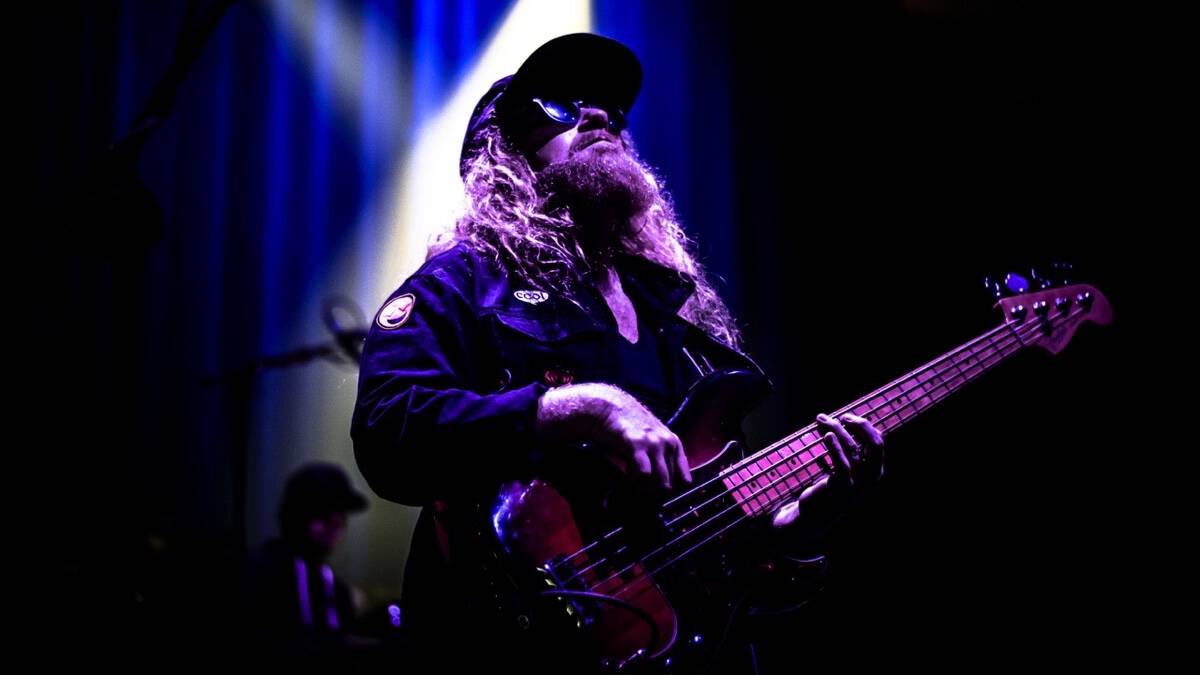
Bassist Erick “Jesus” Coomes…
It is always great to meet a super busy bassist who simply exudes a love for music and his instrument. Erick “Jesus” Coomes fits this description exactly. Hailing from Southern California, “Jesus” co-founded and plays bass for Lettuce and has found his groove playing with numerous other musicians.
Join us as we hear of his musical journey, how he gets his sound, his ongoing projects, and his plans for the future.
Photo, Bob Forte
Featured Videos
Visit Online
www.lettucefunk.com
IG @jesuscsuperstar
FB@jesuscoomes
FB @lettucefunk
Bass Videos
Working-Class Zeros: Episode #2 – Financial Elements of Working Musicians
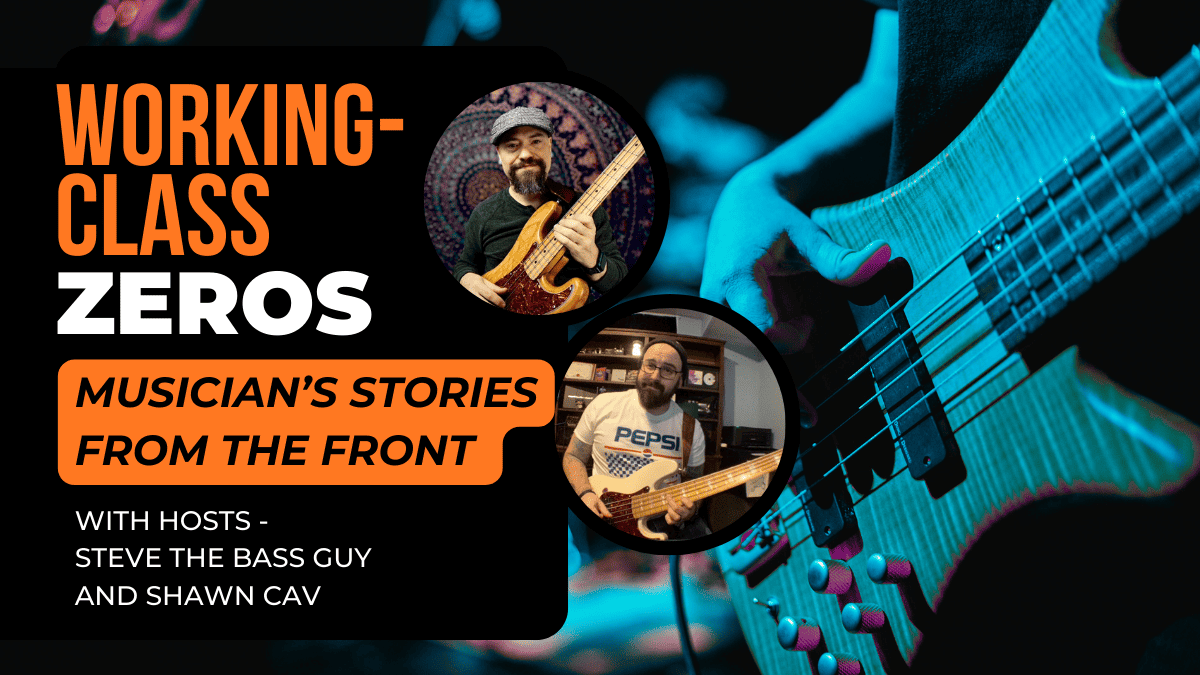
Working-Class Zeros: Episode #2 – Financial Elements of Working Musicians
“These stories from the front are with real-life, day-to-day musicians who deal with work life and gigging and how they make it work out. Each month, topics may include… the kind of gigs you get, the money, dealing with less-than-ideal rooms, as well as the gear you need to get the job done… and the list goes on from there.” – Steve the Bass Guy and Shawn Cav
Latest
This Week’s Top 10 Basses on Instagram
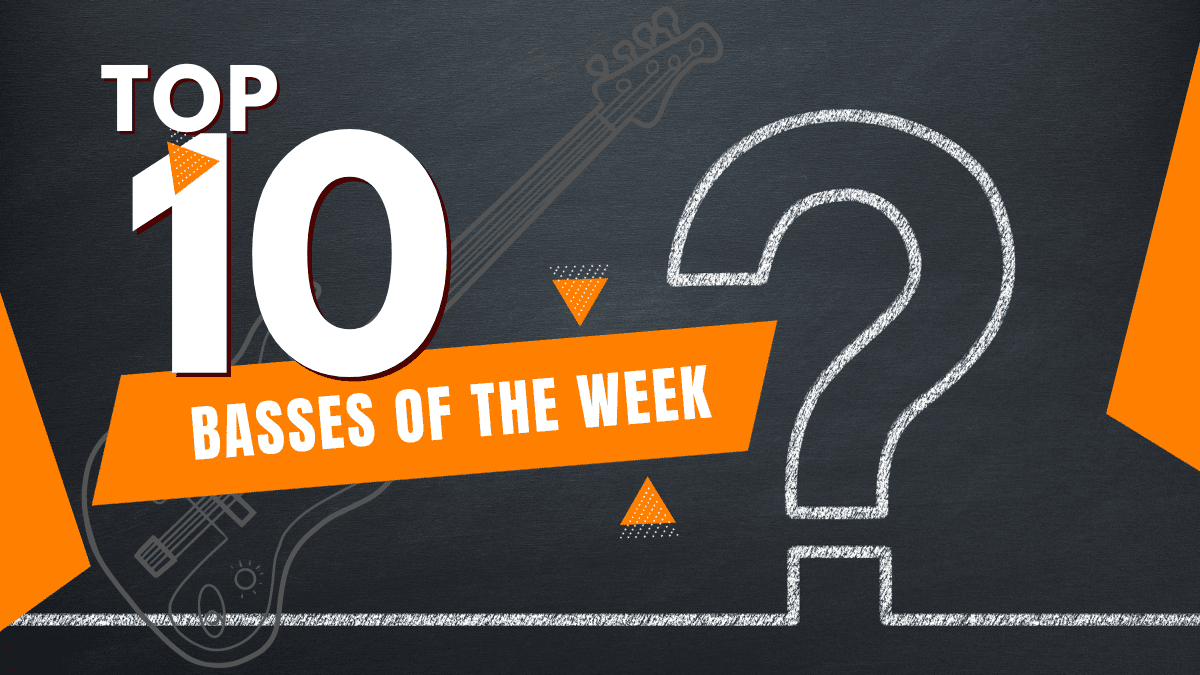
Check out our top 10 favorite basses on Instagram this week…
Click to follow Bass Musician on Instagram @bassmusicianmag
FEATURED @foderaguitars @overwaterbasses @mgbassguitars @bqwbassguitar @marleaux_bassguitars @sugi_guitars @mikelullcustomguitars @ramabass.ok @chris_seldon_guitars @gullone.bajos
Bass CDs
New Album: Jake Leckie, Planter of Seeds
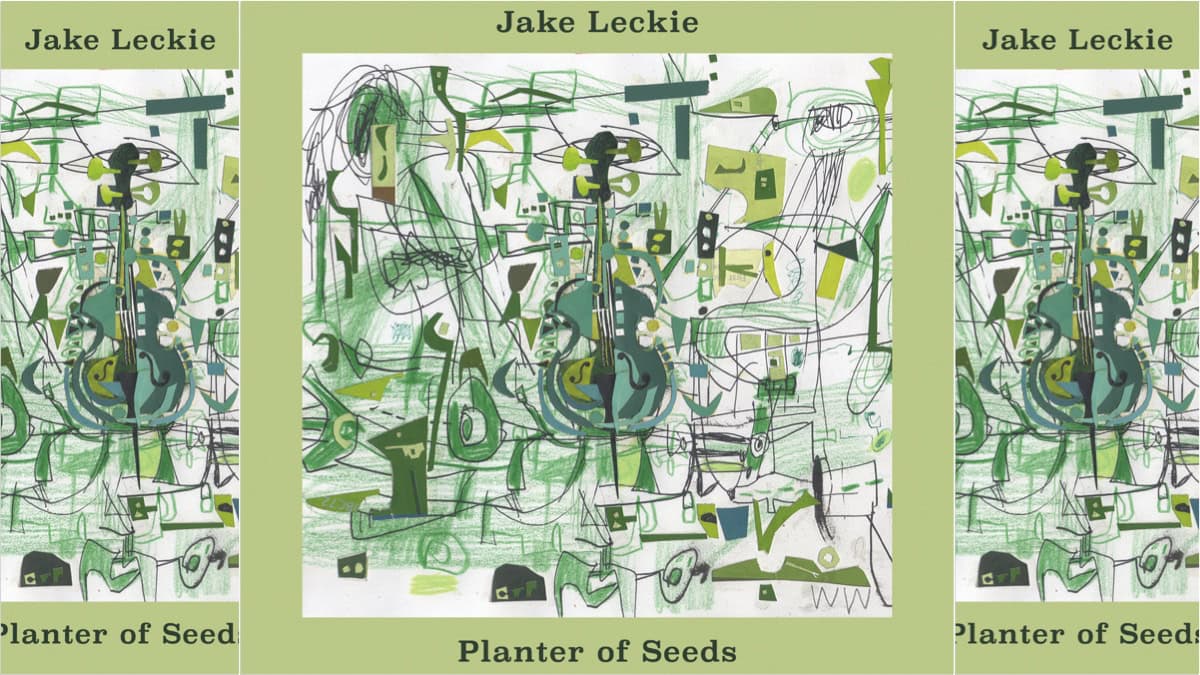
Bassist Jake Leckie and The Guide Trio Unveil New Album Planter of Seeds,
to be released on June 7, 2024
Planter of Seeds is bassist/composer Jake Leckie’s third release as a bandleader and explores what beauty can come tomorrow from the seeds we plant today.
What are we putting in the ground? What are we building? What is the village we want to bring our children up in? At the core of the ensemble is The Guide Trio, his working band with guitarist Nadav Peled and drummer Beth Goodfellow, who played on Leckie’s second album, The Guide, a rootsy funky acoustic analog folk-jazz recording released on Ropeadope records in 2022. For Planter of Seeds, the ensemble is augmented by Cathlene Pineda (piano), Randal Fisher (tenor saxophone), and Darius Christian (trombone), who infuse freedom and soul into the already tightly established ensemble.
Eight original compositions were pristinely recorded live off the floor of Studio 3 at East West Studios in Hollywood CA, and mastered by A.T. Michael MacDonald. The cover art is by internationally acclaimed visual artist Wayne White. Whereas his previous work has been compared to Charles Mingus, and Keith Jarrett’s American Quartet with Charlie Haden, Leckie’s new collection sits comfortably between the funky odd time signatures of the Dave Holland Quintet and the modern folk-jazz of the Brian Blade Fellowship Band with a respectful nod towards the late 1950s classic recordings of Ahmad Jamal and Miles Davis.
The title track, “Planter of Seeds,” is dedicated to a close family friend, who was originally from Trinidad, and whenever she visited family or friends at their homes, without anyone knowing, she would plant seeds she kept in her pocket in their gardens, so the next season beautiful flowers would pop up. It was a small altruistic anonymous act of kindness that brought just a little more beauty into the world. The rhythm is a tribute to Ahmad Jamal, who we also lost around the same time, and whose theme song Poinciana is about a tree from the Caribbean.
“Big Sur Jade” was written on a trip Leckie took with his wife to Big Sur, CA, and is a celebration of his family and community. This swinging 5/4 blues opens with an unaccompanied bass solo, and gives an opportunity for each of the musicians to share their improvisational voices. “Clear Skies” is a cathartic up-tempo release of collective creative energies in fiery improvisational freedom. “The Aquatic Uncle” features Randal Fisher’s saxophone and is named after an Italo Calvino short story which contemplates if one can embrace the new ways while being in tune with tradition. In ancient times, before a rudder, the Starboard side of the ship was where it was steered from with a steering oar. In this meditative quartet performance, the bass is like the steering oar of the ensemble: it can control the direction of the music, and when things begin to unravel or become unhinged, a simple pedal note keeps everything grounded.
The two trio tunes on the album are proof that the establishment of his consistent working band The Guide Trio has been a fruitful collaboration. “Santa Teresa”, a bouncy samba-blues in ? time, embodies the winding streets and stairways of the bohemian neighborhood in Rio de Janeiro it is named for. The swampy drum feel on “String Song” pays homage to Levon Helm of The Band, a group where you can’t always tell who wrote the song or who the bandleader is, proving that the sum is greater than the individual parts. Early jazz reflected egalitarianism in collective improvisation, and this group dynamic is an expression of that kind of inclusivity and democracy.
“The Daughters of the Moon” rounds out the album, putting book ends on the naturalist themes. This composition is named after magical surrealist Italo Calvino’s short story about consumerism, in which a mythical modern society that values only buying shiny new things throws away the moon like it is a piece of garbage and the daughters of the moon save it and resurrect it. It’s an eco-feminist take on how women are going to save the world. Pineda’s piano outro is a hauntingly beautiful lunar voyage, blinding us with love. Leckie dedicates this song to his daughter: “My hope is that my daughter becomes a daughter of the moon, helping to make the world a more beautiful and verdant place to live.”
Bass CDs
Debut Album: Nate Sabat, Bass Fiddler
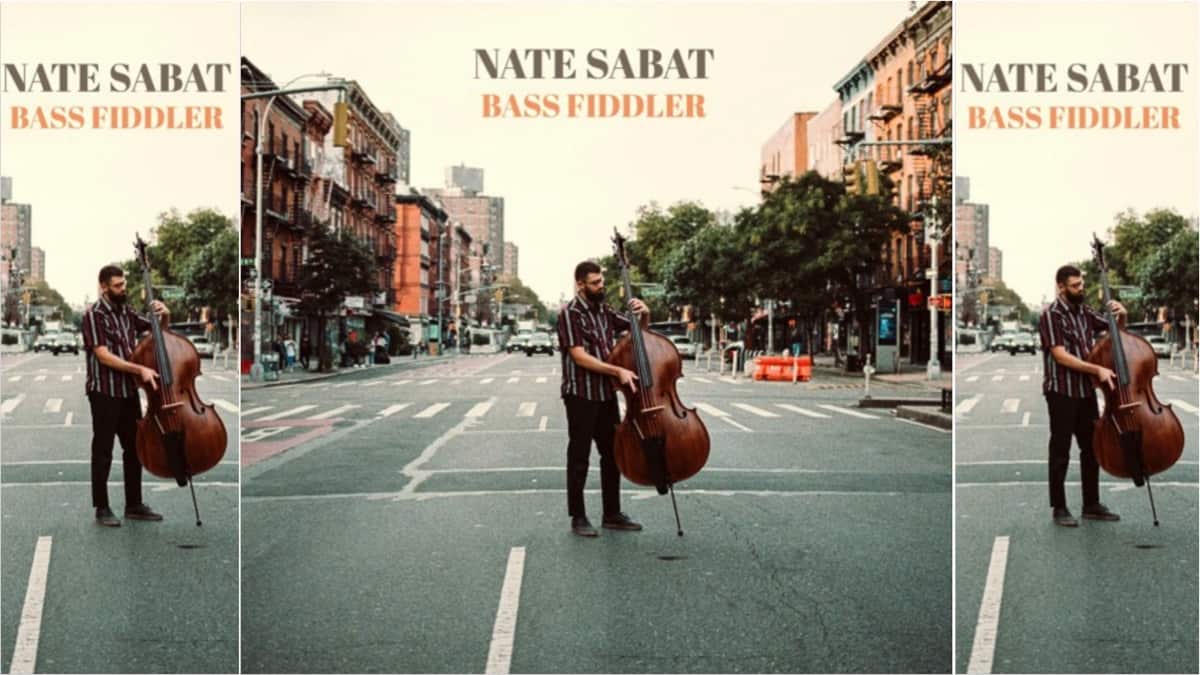
In a thrilling solo debut, bassist Nate Sabat combines instrumental virtuosity with a songwriter’s heart on Bass Fiddler…
The upright bass and the human voice. Two essential musical instruments, one with roots in 15th century Europe, the other as old as humanity itself.
On Bass Fiddler (Adhyâropa Records ÂR00057), the debut album from Brooklyn-based singer-songwriter and bass virtuoso Nate Sabat, the scope is narrowed down a bit. Drawing from the rich and thriving tradition of American folk music, Sabat delivers expertly crafted original songs and choice covers with the upright bass as his lone tool for accompaniment.
The concept was born a decade ago when Sabat began studying with the legendary old-time fiddler Bruce Molsky at Berklee College of Music. “One of Bruce’s specialties is singing and playing fiddle at the same time. The second I heard it I was hooked,” recalls Sabat. “I thought, how can I do this on the bass?” From there, he was off to the races, arranging original and traditional material with Molsky as his guide. “Fast forward to 2020, and I — like so many other musicians — was thinking of how to best spend my time. I sat down with the goal of writing some new songs and arranging some new covers, and an entire record came out.” When the time came to make the album, it was evident that Molsky would be the ideal producer. Sabat asked him if he’d be interested, and luckily he was. “What an inspiration to work with an artist like Nate,” says Molsky. “Right at the beginning, he came to this project with a strong, personal and unique vision. Plus he had the guts to try for a complete and compelling cycle of music with nothing but a bass and a voice. You’ll hear right away that it’s engaging, sometimes serious, sometimes fun, and beautifully thought out from top to bottom.”
While this record is, at its core, a folk music album, Sabat uses the term broadly. Some tracks lean more rock (‘In the Shade’), some more pop (‘White Marble’, ‘Rabid Thoughts’), some more jazz (‘Fade Away’), but the setting ties them all together. “There’s something inherently folksy about a musician singing songs with their instrument, no matter the influences behind the compositions themselves,” Sabat notes. To be sure, there are plenty of folk songs (‘Louise’ ‘Sometimes’, ‘Eli’) and fiddling (‘Year of the Ox’) to be had here — the folk music fan won’t go hungry. There’s a healthy dose of bluegrass too (‘Orphan Annie’, ‘Lonesome Night’), clean and simple, the way Mr. Bill Monroe intended.
All in all, this album shines a light on an instrument that often goes overlooked in the folk music world, enveloping the listener in its myriad sounds, textures, and colors. “There’s nothing I love more than playing the upright bass,” exclaims Sabat. “My hope is that listeners take the time to sit with this album front to back — I want them to take in the full scope of the work. I have a feeling they’ll hear something they haven’t heard before.”
Available online at natesabat.bandcamp.com/album/walking-away



















